
Composting & Fighting Food Waste
By Natalie Lewis
Food waste is a major problem in the UK, with a staggering 9.5 million tonnes of food being discarded every year.
The food industry is a massive contributor to this issue, as it produces 6.2 million tonnes of waste each year. These statistics make it difficult to understand why better initiatives have not been implemented to resolve this crisis.
Another leading cause of food waste is the lack of education we have when it comes to how we should dispose of food. Because of this, we’ve created a guide which will help you dispose of food correctly and also give you tips to reduce your food consumption.
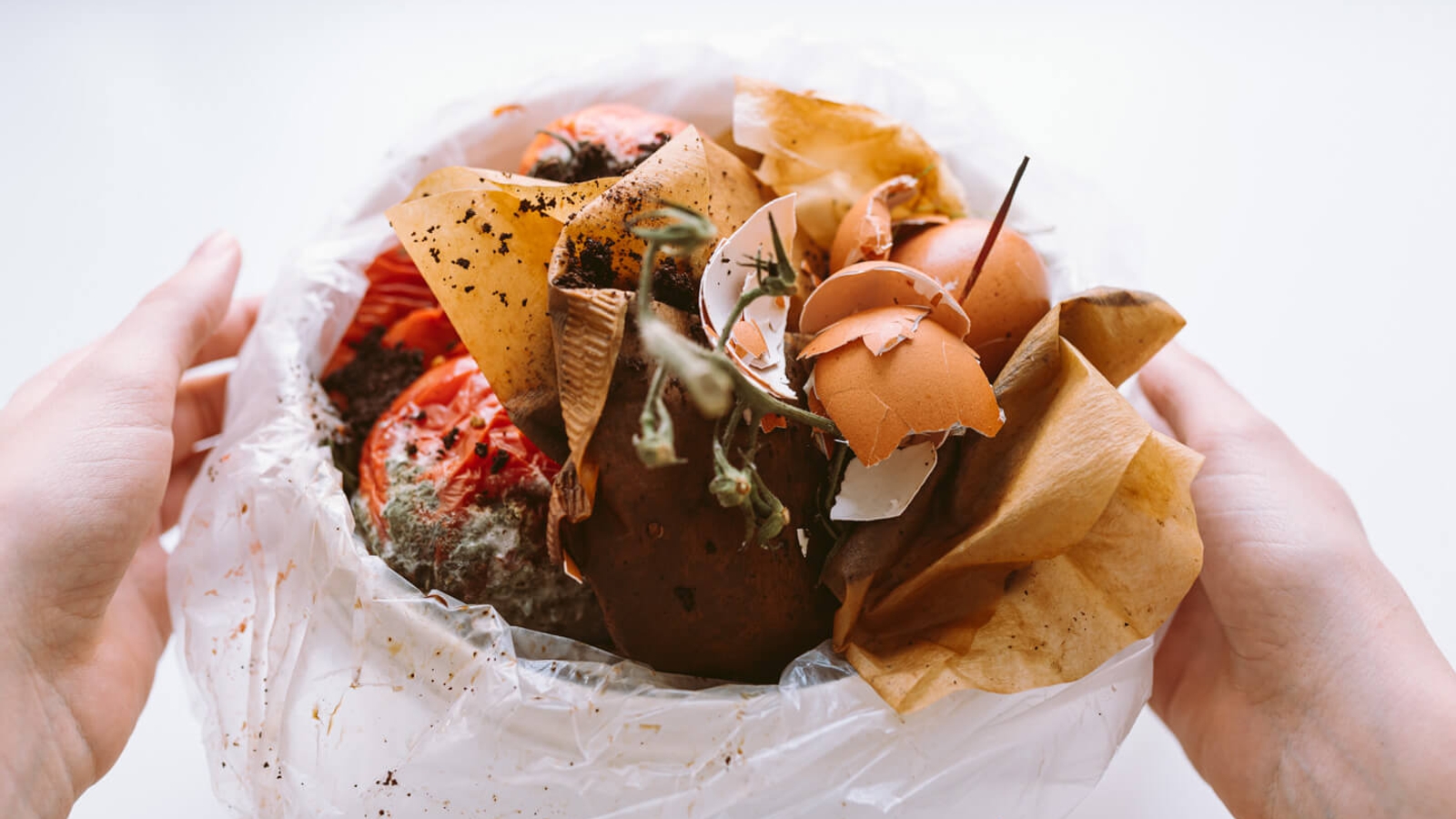
What Is Food Waste?
Food waste simply means any food products that are disposed of rather than being consumed. This waste can be categorised by the following:
- By-product food waste. This is the food that is created through the production process or agricultural practices. Examples of this waste are peels and trimmings from fruit and veg.
- Expired products. This refers to products that are disposed of because they have exceeded their sell-by date and are not allowed to be sold by retailers.
- Leftovers. This refers to any leftover food created in your house from food preparation or takeout from restaurants.
- Bakery and packaged food waste. This refers to item that are sold fresh.

What Are The Most Commonly Wasted Food Products?
It is unsurprising to note that the most wasted food items are the staple foods that can be found in the majority of UK households.
According to a recent study by River Cottage, we commonly dispose of bread, milk, potatoes and cheese the most. Check out the full stats and Hugh Fearnley-Whittingstall’s tips for using ingredients up:
- Bread – Over 240 million slices of bread are chucked away every year. Bread freezes really well, particularly for toast, so make sure you pop in the freezer if you're not going to use it. Stale bread can be turned into croutons, breadcrumbs, eggy bread or even bread and butter pudding.
- Milk – Around 5.9 million glasses of milk are poured down the sink every year, but it's so easy to use it up. You can use large quantities of milk in a fruit smoothie, béchamel sauce or make rice (or barley) pudding. If your milk is on the turn have a go at curd cheese or paneer.
- Potatoes – We discard 5.8 million potatoes each year. Store potatoes in a dark place so they last longer. If they have been hanging around for a while, cook them all up and freeze in portions. Make potato cakes, fishcakes or gnocchi with leftover mash and bubble and squeak with leftover roasties. Par-boiled potatoes can be sliced and sautéed for a quick supper or roasted to make potato wedges (which can be cooked and frozen).
- Cheese – Cheese lasts a very long time, so there really is no excuse if you chuck it away! If it’s mouldy just scrape it off and use the rest in cooking. Cheese sauce is easy, just make a béchamel and add leftover scraps of any cheese - essential for lasagne, macaroni or cauliflower cheese and lots of other favourites. Finally, most cheese can be frozen.
- Apples – A staggering 1.3 million apples are thrown away each year. To make them last longer, store in a cold, dark and well-ventilated place - make sure they aren't touching each other and they are clean and dry.
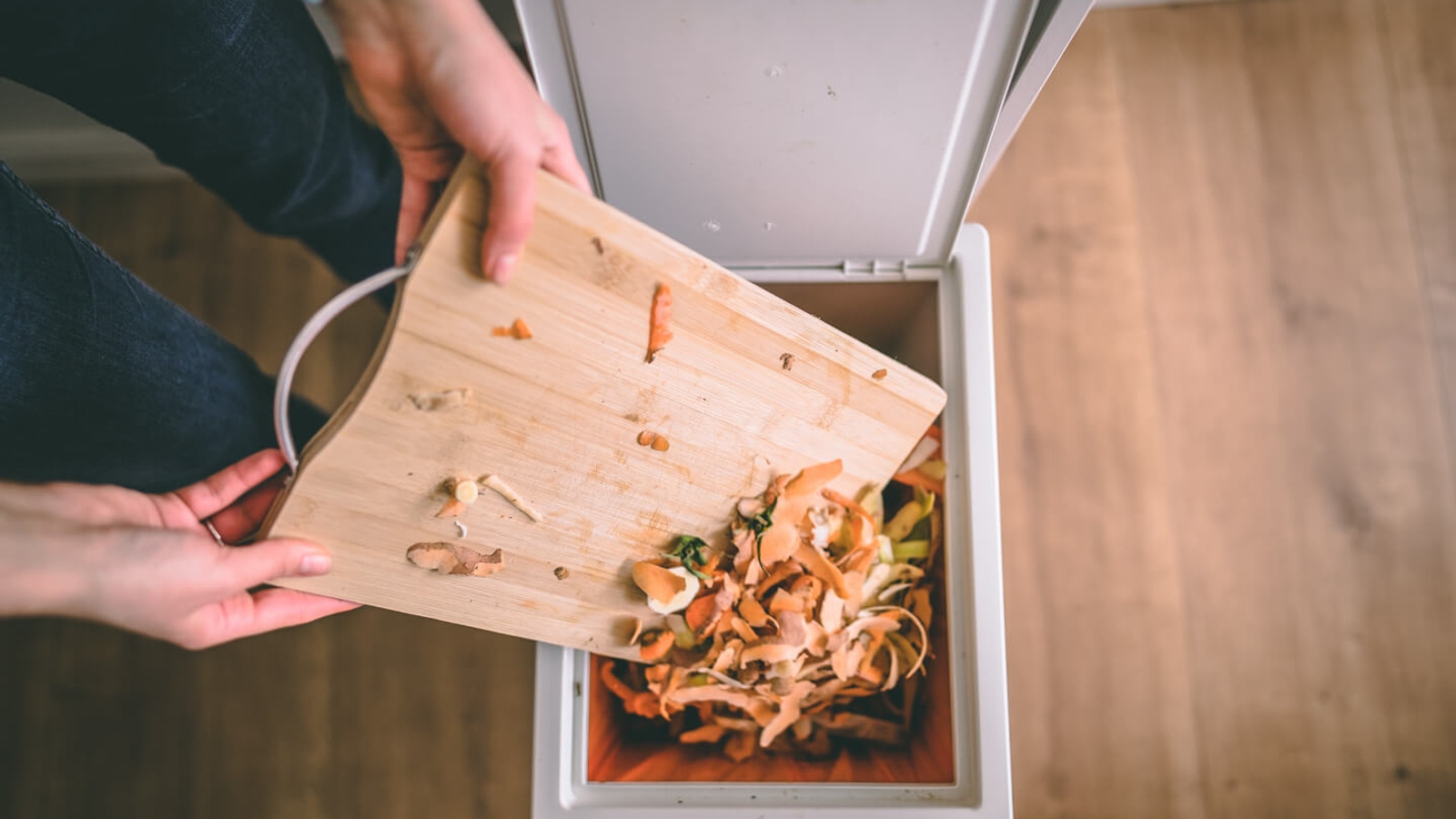
The Problem With Food Waste
Discarded food typically ends up at landfill sites, which are already suffering immensely due to the vast number of products that are dumped there. Add in the excessive tonnes of food waste and this becomes a bigger problem.
Although, overfilled landfills are an issue, this is not the biggest concern when it comes to food waste. Food naturally breaks down over time, which reduces the volume of waste in landfill sites, but majorly contributes to global warming. This is because food waste releases methane as it decomposes.
A report published by EPA found that methane is 25 times more damaging to the environment than carbon dioxide as it traps heat within the atmosphere.
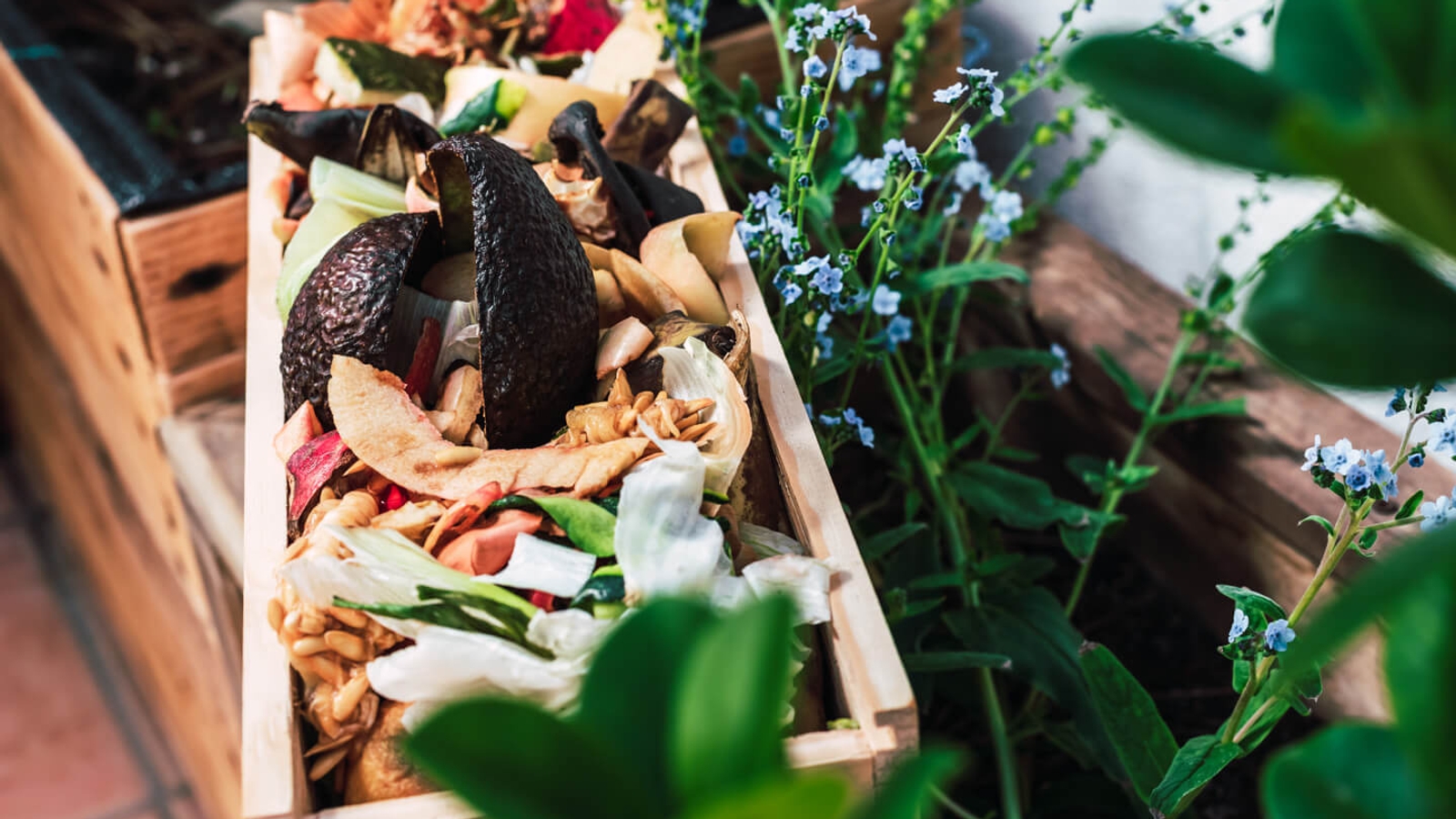
How To Deal With Food Waste
Composting food waste is beneficial, as it can be converted to make other products such as fertilisers or energy. It is essential to check with your local council to see if they offer a home food waste collection, to help make recycling food waste easier.
Using a food caddy is a simple and effective way to recycle food as most items can be thrown in it, even mouldy or out-of-date products. However, materials that aren’t food – liquids like milk, and any packaging, should not go into the caddy.
If you are still unsure what items can go into your food caddy, check your local council’s website. This method of recycling food has become more popular for households, if your local authority doesn’t offer this type of collection, you can try home composting!
There are some other options.
Bokashi bins are an ingenious composting system originating from Japan which essentially pickles your food waste. There are two bins involved: you fill the first with any organic matter – that means you can add everything from bones, to old meat and soured milk, along with a sprinkle of a special type of ‘bran’ which has a type of bacteria that aids decomposition. Once filled, you switch to the other bin and leave the first one for around two weeks. You can read more about bokashi bins here.
There are also countertop composting gadgets like Lomi which have begun to appear – allowing you to compost food waste in around 24 hours. So if speed is something you need, or you don’t have the space for a full size compost bin in your garden, this could be a potential answer.
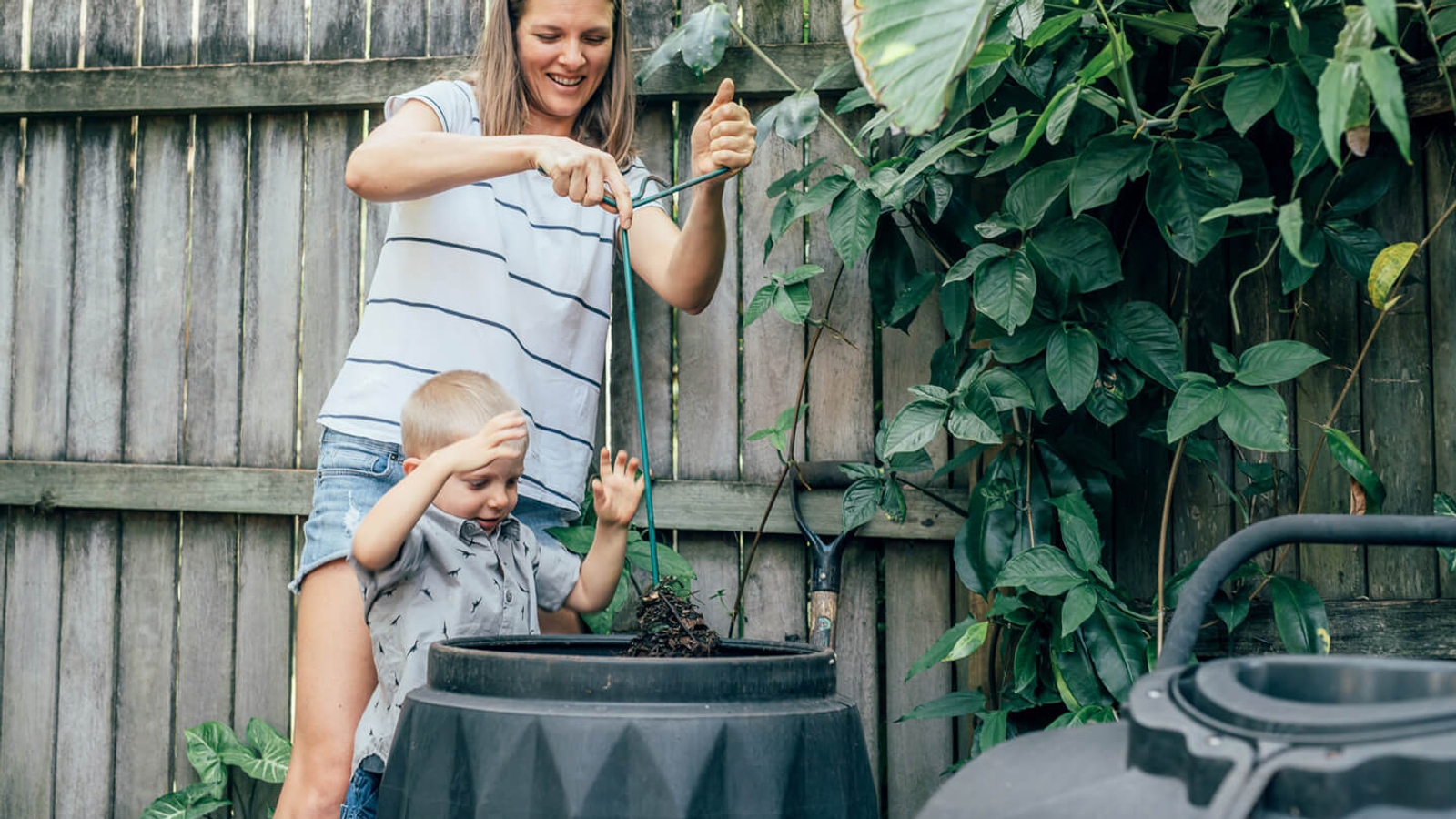
How To Compost Your Food Waste
A great way to help reduce food waste is by composting at home. It is an inexpensive and easy project that all the family can participate in. Composting can be a good opportunity to teach your children responsibility, and the importance of reducing food waste.
Composting your food can also help to improve your garden, as it provides nutrient rich food, and improves soil structure.
To begin composting in your garden, here’s a few of factors to take into consideration to help you achieve your best composting results.
1. Location
The location of your compost bin is vitally important in order to achieve success. The bin should be placed in an area in your garden which is sheltered in partial or full shade, to avoid extreme temperatures and too much moisture.
The microorganisms that help encourage the process of decomposition, from waste to compost, work best in constant conditions. Placing the bin on an earth base will also allow for better drainage.
2. Composting material
There are two types of products needed when composting, and creating an equal amount of both materials provides micro-organisms with the best environment to work rhs.org. These include:
Green waste: this waste is typically soft, leafy materials such as grass clippings, weeds and fruit and vegetable peelings.
Brown waste: usually consists of dry woody waste such as hedge-trimmings, dead stems and straw. You can also add shredded paper or cardboard to your bin.
Many items from your home can be placed in your composting bin. Here’s a list of items that can go in your compost:
- Garden waste (grass cuttings, old plant matter etc)
- Food scraps and waste such as fruit and vegetable peelings
- Teabags and coffee grounds
- Paper and cardboard (though be sure to shred them first, to help them break down)
- Bamboo toothbrushes without the bristles (again, if you can break them up this will help)
- Straw and herbivore pet poo (such as rabbits or chickens)
However, many items should be avoided as their pathogens cannot be destroyed due to the low temperatures of home composting. Using these types of food in your compost could also attract vermin to your garden Items to avoid include;
- Cooked foods, meats and fish.
- Faeces from carnivore pets such as dogs and cats.
3. Maintenance
You should aim to mix your compost several times a year, as this will add air to the compost material, which is essential for completing the process. As it will accelerate the composting and ensure all the materials are broken down.
However, if you find it difficult to maintain mixing the compost, don’t be discouraged. As long as the mixture is equally balanced with brown and green waste, the process will happen naturally. Check out this more in-depth guide from the Royal Horticultural Society (RHS).
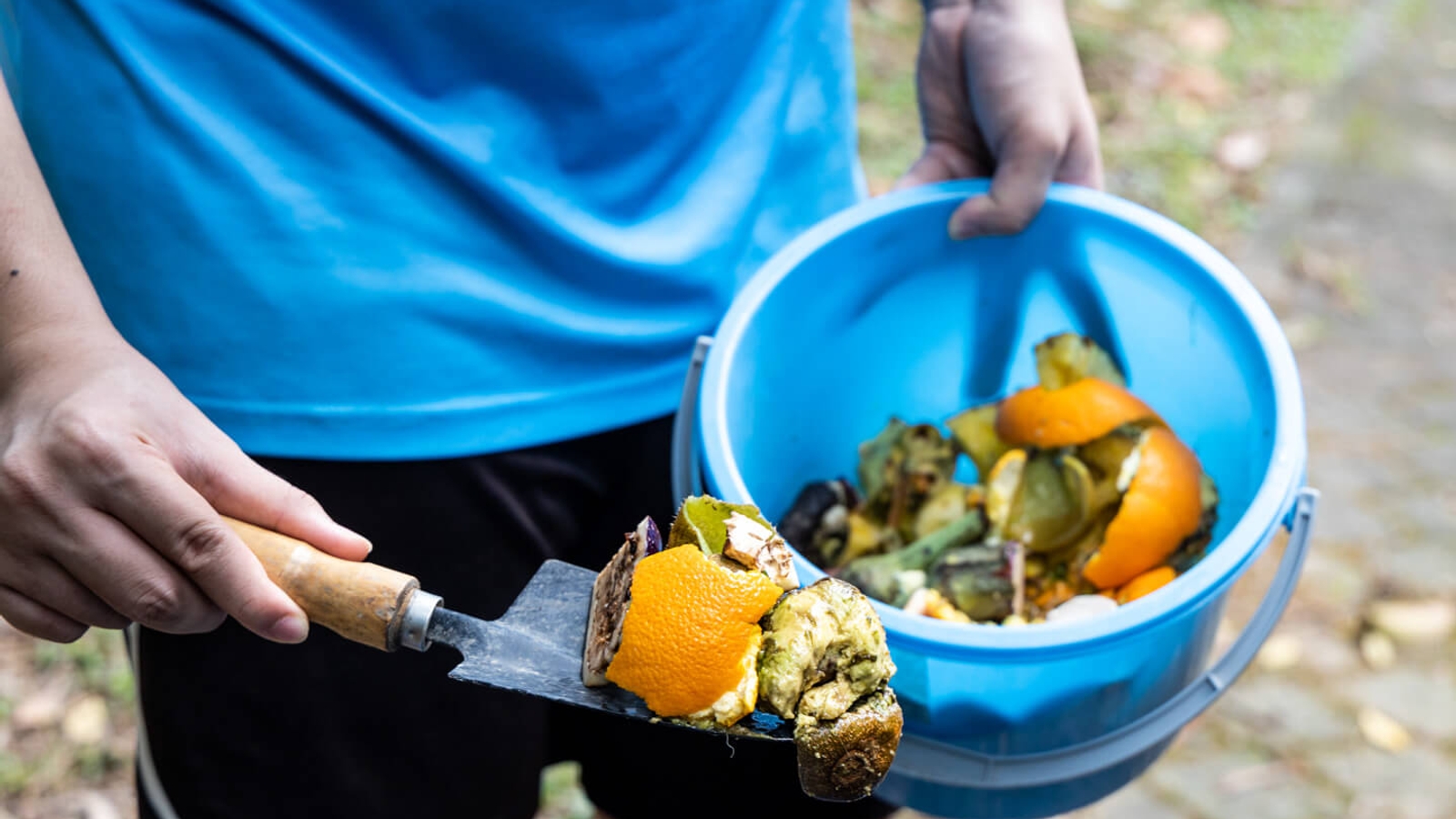
How To Start Composting
Choosing the right location is important for the success of your compost. Ideally you want to place your bin in a fairly sunny place on bare soil.
Collect your ingredients for composting. Examples include; vegetable and fruit peelings, teabags and eggshells.
To create the compost mixture, fill your bin with your brown and green waste.
Sit tight! It takes a while for your compost to ferment. It should be ready to use from nine to twelve months. Make sure you frequently add garden waste to help the process of decomposition, and mix it all about to introduce some oxygen into your compost.
Once the compost has a crumbly, dark texture and resembles thick moist soil it is ready to be used!
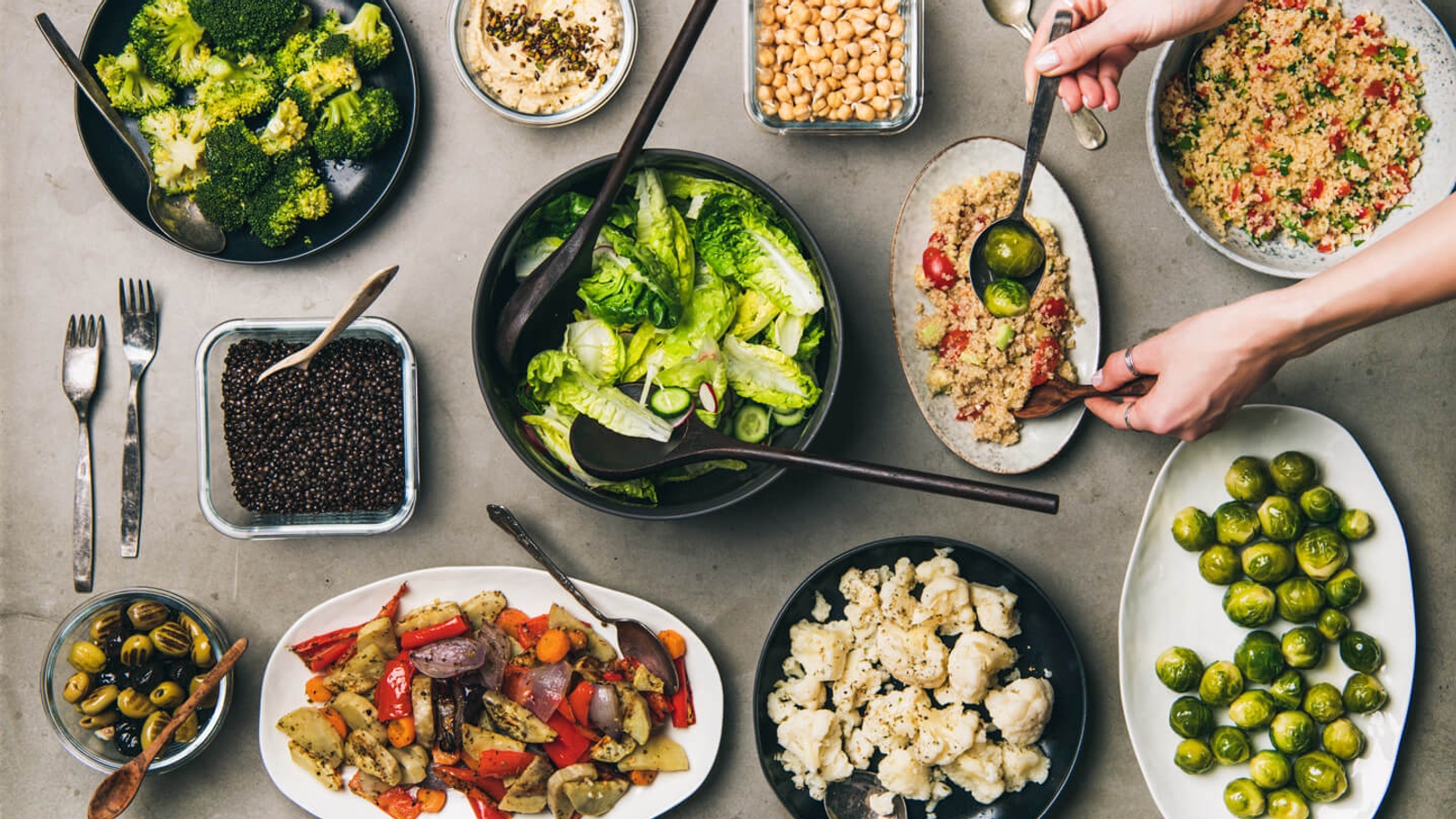
Tips For Reducing Food Waste
1. Plan your meals
One of the most efficient ways to reduce food waste at home is by preparing your weekly meals. Planning your meals before you go shopping will prompt you to only purchase necessary items. Before you go shopping, make a note of what’s left in your fridge, as this will prevent you from buying multiples of the same product.
Another tip is to go shopping after eating, as being hungry whilst food shopping is a recipe for disaster. Grocery shopping on an empty stomach means you are bound to make poor decisions based on temporary cravings!
2. Know how to store your food
Knowing how to store your food is important for getting the most out of it. Make sure you put your food items with the shortest expiry dates at the front of your cupboards or fridge. Organising your fridge will also help preserve your food. Ready to eat foods should be kept on the top shelf, sealed raw meat should be kept on the bottom shelf, to avoid contamination from any drippings.
To help reserve your food, keep your fridge temperature at a maximum of 4℃, this will prevent it from spoiling. You should avoid overcrowding your fridge, as it will help your fridge to function correctly, by allowing the air to ventilate throughout the fridge, without being blocked.
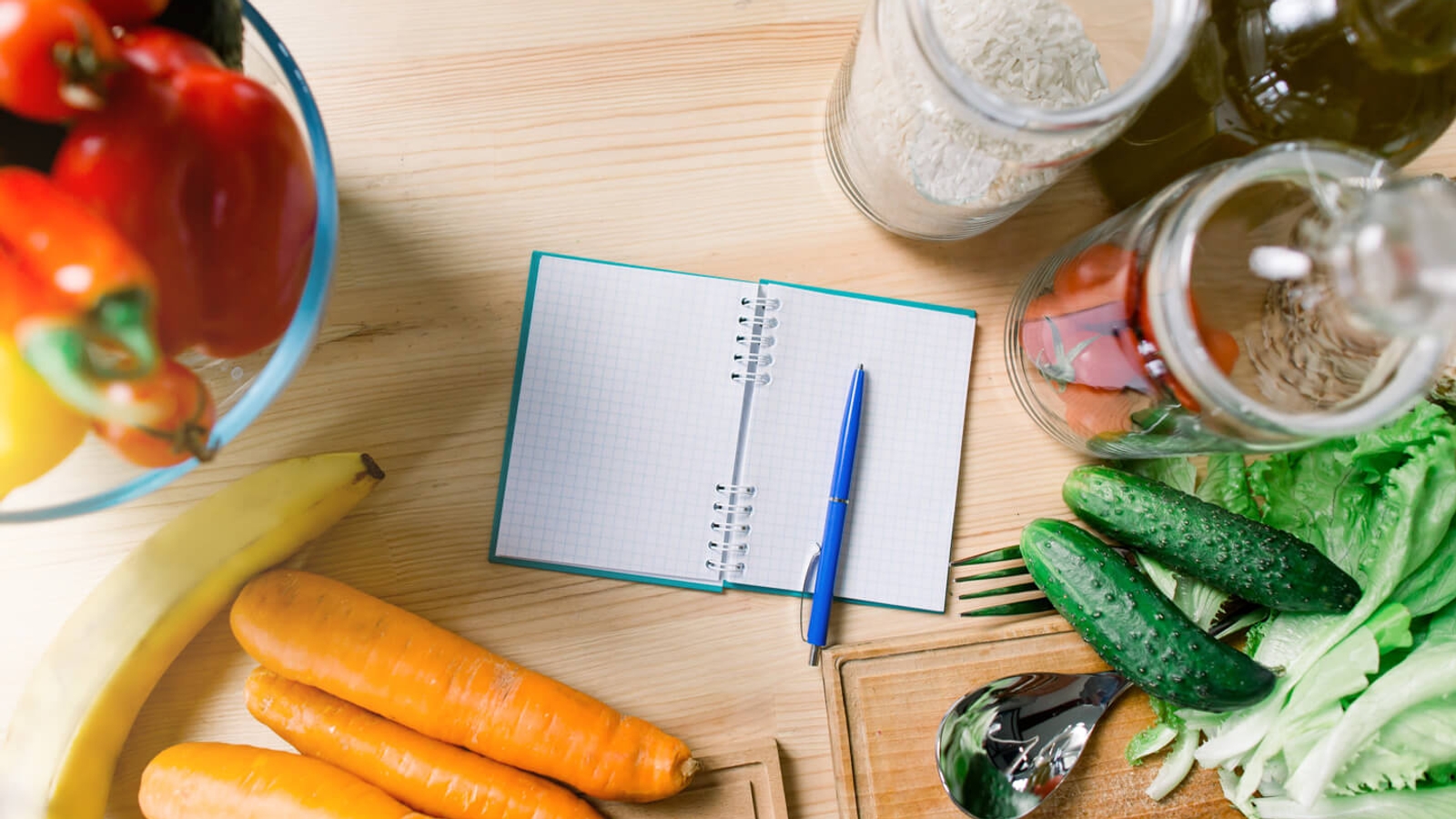
3. Understand the difference between ‘use by’ and ‘best before dates’
A ‘use by’ date is typically used for perishable products such as meat or dairy. It gives you a timeline of when a product is still safe to consume. To help reduce food waste of these products, don’t bulk buy as you may not get round to cooking or eating them by their use by date.
A ‘best before’ date means products can still be consumed safely even after this date, however its quality may have altered. This applies to food items such as dried foods (such as pasta or rice), tinned foods (such as baked beans) and frozen foods (such as chips). This guidance is only applicable if the food has been stored appropriately as that of the instructions on the package.
4. Freeze leftovers
Freezing leftovers is an great solution to reducing your food waste. Portioning out your leftover meals and freezing them can provide you with a quick and easy weekday meal, and one which reduces the hassle of deciding what to eat and cooking that meal during a busy week!
5. Donate extras
When clearing out your cupboards or fridge and you know you have some items that you will just never eat and they are still in date, consider offering them to someone else.
Whether it’s your neighbour, or your nearest Community Fridge, or your local food bank or community centre. Make sure to look up guidance for these last two, so you know what they accept. This usually includes shelf-stable items like tins, dried pasta and rice, and packaged items that last for a long time.
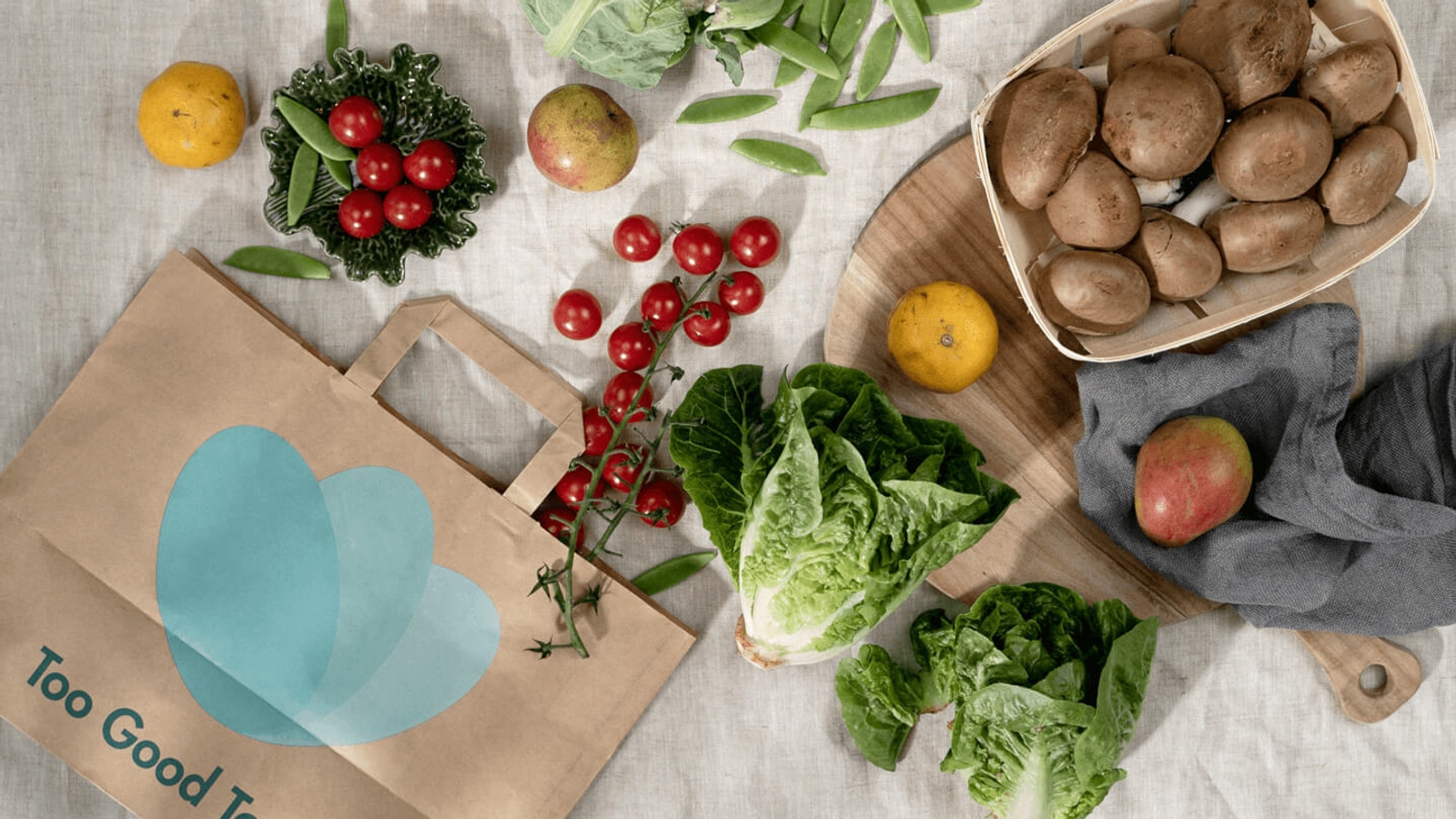
Food Waste Apps And Websites
Restaurants are massive contributors towards food waste. Fortunately, many organisations are acknowledging this fact, and are making a difference by highlighting the problem and tackling it head on.
Too Good To Go is a great example of an organisation making a big change. They work with different restaurants to help reduce their food waste. The app allows you to to purchase a surprise bag of takeout food (often including customer favourites) for a largely discounted price. Download their app, to find a variety of restaurants in your area that offer this service!
Hubbub is another great organisation – in addition to running the Community Fridge network mentioned earlier, has loads of cool campaigns around food waste and recycling.
Olio is another great app for sharing leftover food. You can sign up for free to join their community of 7 million+ people worldwide who share food with people in their local community.
Hopefully this guide has helped to inform you on how to deal with food waste. Remember small changes can make a big difference! So don’t worry about having perfect habits when it comes to discarding food waste, just try your best!



